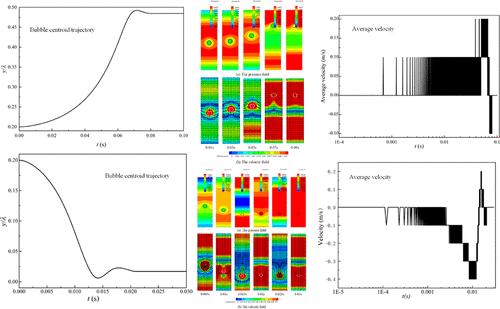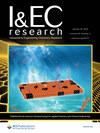Direct Numerical Simulation of Quasispherical Bubble Motion in Ultrasonic Standing Wave Fields
IF 3.8
3区 工程技术
Q2 ENGINEERING, CHEMICAL
引用次数: 0
Abstract
To promote the development of an ultrasonic levitation technique, it is essential to understand the mechanism of bubble motion in ultrasonic standing wave fields. The trajectory of bubble motion, the levitation position, and the accompanying change in the surrounding flow field were investigated. The effects of sound pressure amplitude pa, acoustic frequency f, bubble radius Rb, and gravity level G/g on bubble motion were fully analyzed. It was found that the bubble levitation position y/λ decreases with an increase in pa but it increases with an increase in Rb, f, and G/g. The chaos of flow fields increases with an increase in pa, Rb, and f, but it decreases first and then increases with an increase in G/g. The time required for a bubble to remain in levitation and the flow field to be steady decreases with an increase in pa and Rb, but it increases first and then decreases with an increase in f and G/g. Based on the equilibrium relationship between the time-averaged primary Bjerknes force FBj and buoyancy force Fbuoy, a dimensionless parameter X is proposed to determine whether or not a bubble will remain in levitation, and the equation to predict bubble levitation position is presented.

超声驻波场中准球形气泡运动的直接数值模拟
为了促进超声悬浮技术的发展,了解超声驻波场中气泡运动的机理至关重要。我们研究了气泡的运动轨迹、悬浮位置以及周围流场的相应变化。全面分析了声压振幅 pa、声频 f、气泡半径 Rb 和重力水平 G/g 对气泡运动的影响。研究发现,气泡悬浮位置 y/λ 随 pa 的增大而减小,但随 Rb、f 和 G/g 的增大而增大。流场的混沌度随 pa、Rb 和 f 的增大而增大,但随着 G/g 的增大先减小后增大。气泡保持悬浮和流场稳定所需的时间随 pa 和 Rb 的增大而减小,但随 f 和 G/g 的增大而先增大后减小。根据时间平均主要比氏力 FBj 和浮力 Fbuoy 之间的平衡关系,提出了一个无量纲参数 X 来确定气泡是否保持悬浮状态,并给出了预测气泡悬浮位置的方程。
本文章由计算机程序翻译,如有差异,请以英文原文为准。
求助全文
约1分钟内获得全文
求助全文
来源期刊

Industrial & Engineering Chemistry Research
工程技术-工程:化工
CiteScore
7.40
自引率
7.10%
发文量
1467
审稿时长
2.8 months
期刊介绍:
ndustrial & Engineering Chemistry, with variations in title and format, has been published since 1909 by the American Chemical Society. Industrial & Engineering Chemistry Research is a weekly publication that reports industrial and academic research in the broad fields of applied chemistry and chemical engineering with special focus on fundamentals, processes, and products.
 求助内容:
求助内容: 应助结果提醒方式:
应助结果提醒方式:


